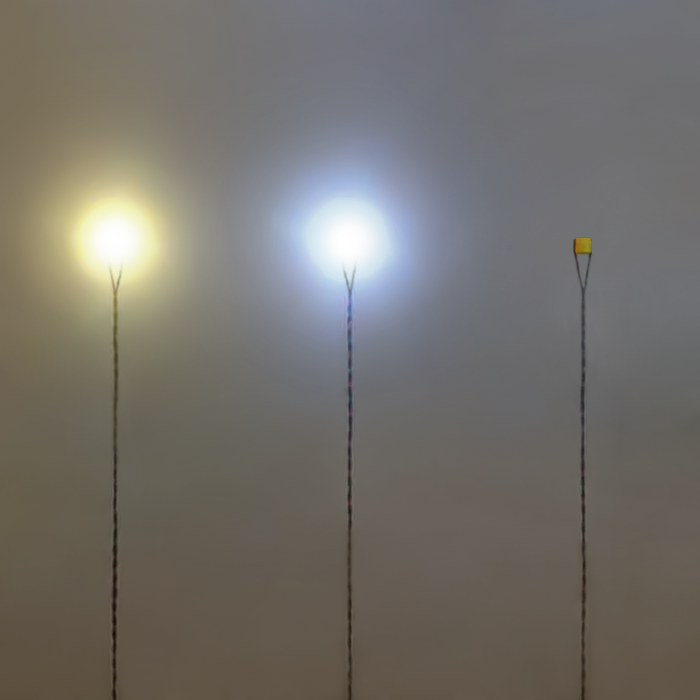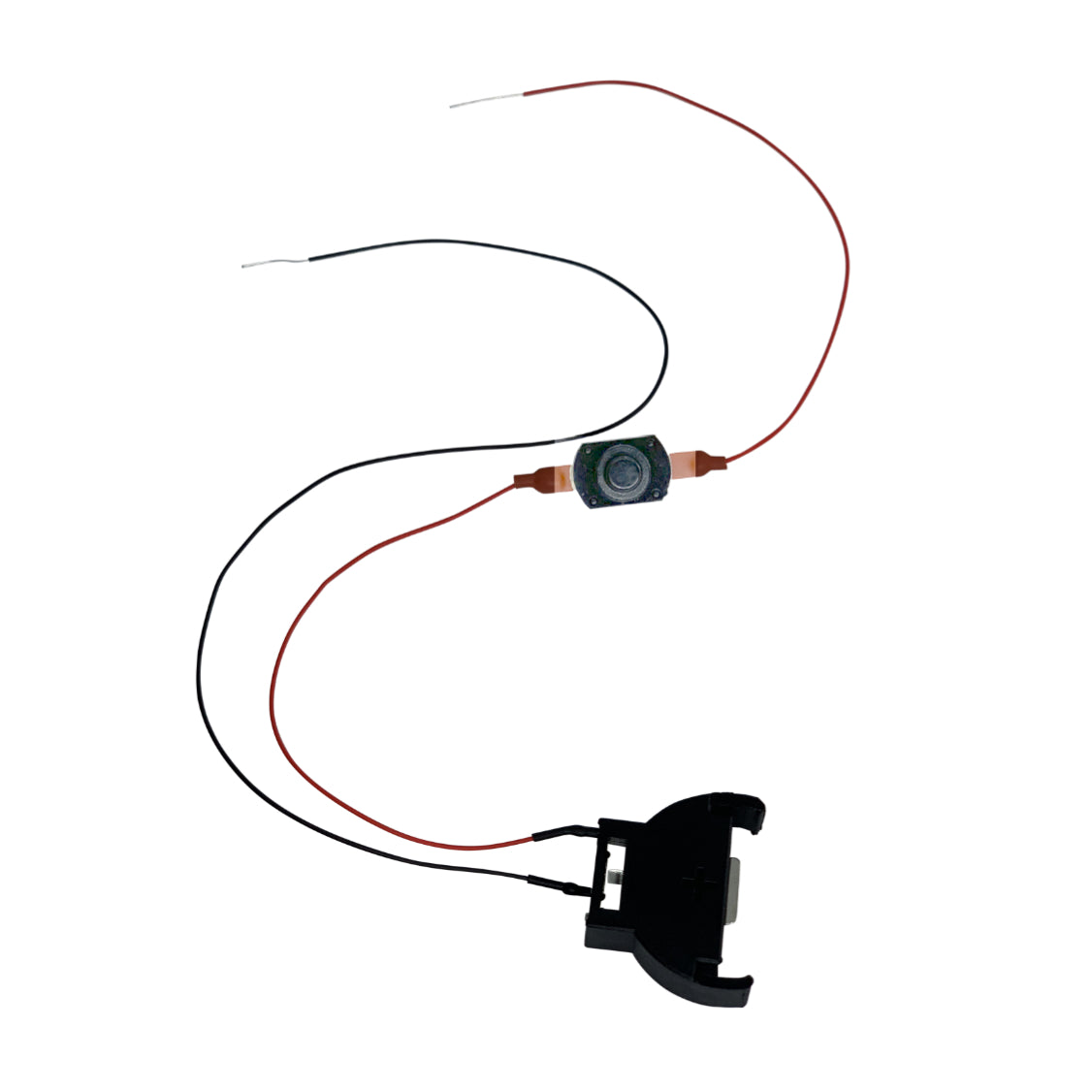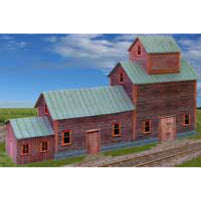Model Railroad News Review of Model Builder Software
Reprinted from Model Railroad News ,Volume 13, Issue 10, October 2007, Page 75-80.
This review has been published to this web site with permission of LampLight Publishing, publishers of Model Railroad News.
Copyright © 2007 LampLight Publishing
Structure Design
using Model Builder,
a software package for Windows
Review and Images by Phil Scandura
Model Builder Software (Windows 10,7,XP)
MSRP: $45.00 Evan Designs
P.O. Box 537 • Laporte CO 80535
303-410-1118
Structures for model railroads come in many forms: readybuilt, plastic kits, wood kits, resin castings, etc. They are used in various ways — as part of the foreground scenery, as a centerpiece in a special scene, as trackside industries, or as background scenery. Depending upon the structure’s location and the amount of viewing attention it will receive, you may spend weeks building a craftsman kit board-byboard, or you may glue a simple plastic kit together in a matter of hours and call it “good enough.” Sometimes all you need are temporary structures, something you can place on the layout as an experiment in constructing a scene, or to represent where a “real” structure will be once you get around to building it. Often these temporary structures are built of cardboard and covered with photocopies of what the eventual structure will look like. I’ve built several, slowly replacing each with the intended structure over time. There have been cases, however, when I wanted to leave the temporary structure in place permanently, but couldn’t do so because it didn’t look very convincing. Now with the latest software design package from Evan Designs you have the ability to create realistic looking structures for use in background scenery, or as placeholders for future structures. The product is Model Builder and it allows you to combine bricks, shingles, siding, roofing, windows, doors, trim, and more to create building sides or backdrops. Once your building sides are designed, creating the structure is a simple matter of printing on a color printer, trimming around the edges with scissors or a modeling knife, and gluing the paper to a cardboard shell. As shown in the screen capture of the start-up screen, Model Builder supports all modeling scales, including 1:24, 1:32, 1:48, 1:64, 1:76, 1:87, 1:160, 1:220, as well as numerous metric scales. In fact, it would be more correct to state that Model Builder supports “any” scale between 1:10 and 1:500, since in addition to the scales listed above you can also enter your own choice in the “other” box when starting the program. Installation Requirements Model Builder runs on all of the newer Microsoft Windows platforms including 2000, ME, XP (Home and Professional), and the most recent Windows operating system, Vista. For those still running Windows 95 or 98, you’ll need to upgrade that old computer first. Minimum system requirements include an 850MHz processor, 250MB RAM and 200MB of available hard disk (in actuality, the program consumes closer to 220MB of hard disk space). Model Builder is supplied on a CD-ROM, which includes a typical Windows installation wizard. For this review, Model Railroad News tested Version 1.4.1 of Model Builder on a Dell Latitude D610 Laptop, with a 1.86GHz Pentium M processor and 512MB RAM running Windows XP Professional. Even though this is twice the recommended minimums for Model Builder, the video-intensive nature of the program still taxed the system during screen zoom and redraw operations. The program has a slight learning curve, easily overcome by a quick read of the brief user’s manual, as well as working through one or two of the simple projects in the Model Builder Project Ideas book. It contains five fun projects, including a Quonset Hut, Backdrop Building Flat, Industrial Shed, Service Station, and Industrial Building. These project ideas are the closest that Model Builder comes to providing a tutorial; while they don’t quite lead you by the nose through the program, they do a pretty good job of hitting the key features. The one formalized tutorial that is provided can be found under the Help Menu called “Modeling Help” - not “Building Help” as mentioned in the User’s Guide. This tutorial, however, doesn’t teach you to use the program; rather it teaches how to assemble a building using Model Builder printouts and includes a discussion about the tools you’ll need. In general, Model Builder has followed most of the typical Windows conventions, giving it the classic look and feel of Windows software. Model Builder does not provide a traditional Window’s help file system, instead it provides an Adobe PDF reader function that opens up a searchable version of the User’s Guide and Project Ideas book that are also provided in printed form in the CD-ROM case. Evan Designs provides a money-back policy on Model Builder (and their other programs); if you’re not satisfied you can return it for full refund of the purchase price within two weeks of delivery. In addition, registered users of Model Builder receive free software updates for one year. See their web site for more details. One last point regarding installation; be sure to review the license agreement displayed during the installation process. It is important to note the third clause which reads, “3. Artwork Copyright. The ArtWork and images contained in the software is the copyright of Evan Designs. This license restricts you from profiting from the resale of the artwork or images for profit.” Using Model Builder Model Builder includes an extensive collection of siding materials (e.g., brickwork, wood siding, corrugated metal, shingles, etc.), windows, doors, shutters, cornices, trim, stairs, trees, utilities, and more. Each and every one of these is a photographic image of the actual thing, not clip art. The staff at Evan Designs spent countless hours photographing, trimming, and cropping to create these digital images. Once added to your building design, the result is a remarkable likeness of the prototype. After you choose a material or object and place it on the drawing, Model Builder provides two main tools for image manipulation. The first is the crop/ paint tool that removes or adds material to the image as you change its size without changing the scale of the material. For example, if you want to make a particular brick pattern wider or longer, this tool adds more bricks in the chosen scale, rather than enlarging or stretching the bricks. The second tool provides the ability to stretch the material or object, changing the appearance as it does so. For example, stretching a four pane window object would increase the size of the windowpanes, rather than adding more panes to the window (for that you would use the crop/paint tool). You can also design your own brickwork or siding using the designer tools and adding them to your palette of materials to choose from. To pull this discussion all together, refer to the photo essay for a quick tour using Model Builder to create a building flat in HO scale. Opportunities for Improvement Being a seasoned computer user of many years, I tend to find the quirks and bugs that lurk behind the covers of commercial software packages, which is probably why Model Railroad News sends the majority of software product reviews my way. In the case of Model Builder I noted a few that should be addressed in the next available release. None of them are major problems; they tend to fall in the “inconvenience” category. I’ve listed them here in no particular order: Values in the Material Dimensions box (i.e., object size and position) tend to blank out after editing a value, even though the object remains selected. In order to make the values visible you have to reselect the object by clicking on it again. When checked, the “Maintain Aspect Ratio” check box in the Material Dimensions box allows the user to drag the drawing handles on an object to change its size while maintaining a consistent length to width relationship. This only works, however, when dragging the handles on the right side of the object. When you drag the handles on the left side the aspect ratio isn’t maintained, i.e., you can resize the object any way you want. Or didn’t want. {this has been repaired V1.4.1} When zooming between views there is a noticeable delay while the redraw occurs. During this time the drawing appears to be “messed up” as pieces and parts are scattered about the screen. It’s quite disconcerting at first, especially since the Model Builder doesn’t display an hourglass or other indication that work is happening in the background; it just looks wrong and then recovers after several seconds. While this is related to the horsepower of your computer and video card performance, it would be nice if the program let you know it was busy doing the zoom and wasn’t finished yet. After using the program for several days I eventually persuaded myself to be a bit more patient and gave it time to settle out. [Editor’s Note: This type of problem can occur when using graphics-intensive software on Windows-compatible PCs that use shared memory between the video card and system or have insufficient video RAM. This is common in laptops and budget-priced systems designed for home use. Evan Designs does not list a recommended graphics component, but this software will probably perform best on a PC with 64MB or more of dedicated video RAM. As with all software, MRN suggests you check your system’s specifications.] Model Builder doesn’t consistently display the filename of drawing being edited. The typical Windows convention is to display the filename in the title bar of the active window; I noticed that sometimes while editing the filename was displayed and other times not. Model Builder includes a single level Undo command, but it only applies to image manipulation (e.g., move, stretch, copy, and paint). It doesn’t work on other actions such as Bring to Front/Send to Back. Because of this, if you try to undo an action that isn’t covered, the program seems to perform the Undo on the last action that it can undo. This results in drawing changes that you didn’t expect. The good news is if you catch the errant change right away, you can use the Redo command to put it right again. Depending upon the complexity of the drawing, the Print Preview function doesn’t always show all of the building objects, e.g., sometimes no windows or doors are shown. Fortunately everything is there when the building is actually printed out. Model Builder allows you to choose the type of display units used by the screen rulers. Using the Units menu you can choose from Actual Inches, Actual Feet, and Actual Meters at any time. You can also set the default display units for the program using the File/Program Setting menu, however, Actual Inches is supported on that menu only. Furthermore, the units chosen for a particular drawing don’t seem to be saved with the drawing file; the program chooses the default instead. So if you’ve chosen to work in Actual Feet you have to deliberately select that setting every time you open a drawing file, as the program has reset you back to Actual Inches. The problem also surfaces on the File/Project/Page Setup menu, as it often displays the incorrect units setting (e.g., if the drawing is set to Actual Feet the page setup menu shows Metric). The printed manual also neglects to mention these other unit systems, suggesting to me that there was a change made in a previous version to add this functionality, but that change was not uniformly applied throughout the software. Next we add a cornice by choosing a slightly different brick pattern and stretching it. Edge trim has also been added using an image from the Model Builder image palette. Just a note, we could have chosen a cornice from the images but instead decided to create our own simple one instead. One last quirk, possibly related to video card performance, is that the granularity of the scroll bars seems to be quite coarse; as you scroll through the drawing it jumps rather than scrolling smoothly. Suggested Design Enhancements Aside from bugs, the following are items I’d like to see added in future revisions either to enhance the usability of the program or to bring it more in line with other programs of this class. Model Builder doesn’t include the ability to define a default drawing folder; it always defaults to “My Documents” and you have to navigate from there. As a work-around I tried setting the “Start In” field of the Windows Properties menu for the program shortcut, but that didn’t work either. In a similar fashion, if you double-click on a drawing file in Windows Explorer it successfully starts Model Builder but does not actually open the drawing file; instead you get the start-up splash screen as if you double-clicked on the program shortcut. In my opinion these are both desirable enhancements and supported by most all Windows programs. I’d like to have the ability to add/ edit text to my drawings. This could default to the fonts already available on the computer, as well as additional fonts that could be supplied with the program. In this way you could create your own simple signs for buildings, or add assembly notes to your building plans. Finally, I miss not being able to “nudge” selected objects using the arrow keys. Many of the other drawing programs that I work with let you select an object and move it around the screen using the arrows (as well as the mouse, of course). More than once I found myself trying to nudge an object only to end up opening a different drawing palette instead. Closing Thoughts Model Builder provides an easy way to create realistic custom structures for your layout, using nothing more than a computer, paper, cardboard backing, and some glue. Despite the quirks and suggested improvements noted, Model Builder works reasonably well. I consider Model Builder to be a welcome addition to my structure scratch-building toolbox. For more information on Model Builder, visit the Evan Designs web site. There you’ll also find the Modeler’s Toolkit, reviewed in the October 2005 issue of Model Railroad News. With it you can create signs, billboards, window trim, and many other details for your layout.





